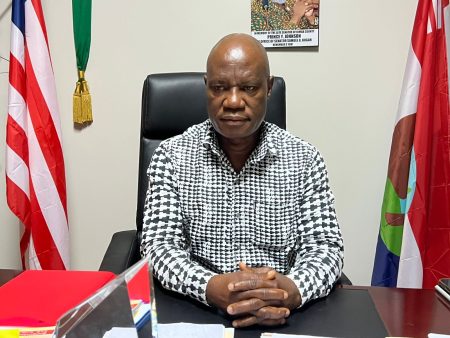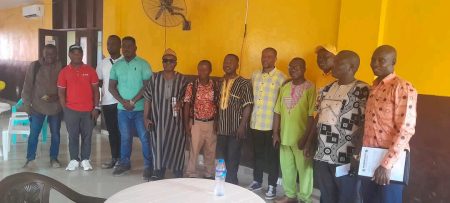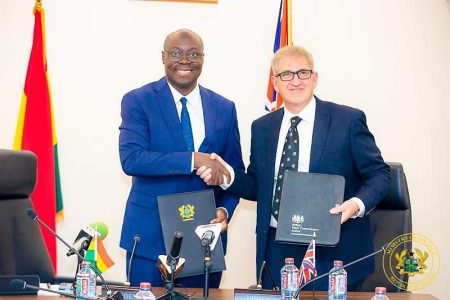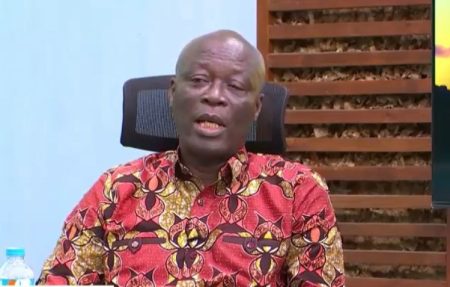Senator Samuel G. Kogar of Nimba County, Liberia, found himself at the center of a chilling alleged assassination attempt, not involving conventional weapons, but rather a purported spiritual attack. The incident began unfolding over a weekend in August 2025, with the arrival of a Guinean national identified as Diasielay in the Senator’s community. Diasielay repeatedly inquired about Senator Kogar’s whereabouts, raising suspicions amongst the residents, especially after he was observed performing unusual actions, such as pressing his feet into the sand outside the Senator’s compound. This seemingly innocuous act, coupled with his persistence in seeking the Senator, prompted concern and led to his initial expulsion from the property. However, Diasielay’s determination was unwavering, and he later returned, confronting Senator Kogar directly. The confrontation took a bizarre turn when, upon being questioned about his purpose, Diasielay presented a red seed, claiming it represented the name of the person he sought.
The Senator’s suspicion intensified, prompting a search of Diasielay’s belongings. The search yielded a disturbing array of items, including animal heads and other unexplained objects. Most alarmingly, a marble found in his wallet was later interpreted by a local herbalist as possessing the power to capture a person’s image and spirit, suggesting a potential link to traditional spiritual practices and a sinister intent. This discovery elevated the situation from mere suspicion to a credible threat against the Senator’s life, pointing towards a planned attack rooted in the realm of spiritual manipulation.
The narrative took an even more disturbing turn during police interrogation. Diasielay confessed to his intent to kill Senator Kogar, not through physical violence, but through a simple touch. This chilling revelation underscored the purported power of the spiritual elements involved, suggesting the belief that a mere physical contact, imbued with malevolent intent and potentially enhanced by ritualistic objects, could be lethal. This alleged confession provided a startling glimpse into the cultural context where traditional beliefs intersect with criminal intent.
The suspect’s claim added another layer of complexity to the unfolding investigation. Diasielay reportedly confessed to being commissioned by three individuals, two men and a woman, to carry out this spiritually driven assassination. This revelation broadened the scope of the investigation, shifting the focus from a lone actor to a potential conspiracy. The authorities were now tasked with identifying and apprehending these alleged accomplices, uncovering their motives, and understanding the extent of their involvement in the plot. This pursuit of the truth further highlights the intersection of traditional beliefs and modern criminal investigations.
The case, with its blend of traditional spiritual beliefs and alleged criminal intent, highlights the unique challenges faced by law enforcement in navigating culturally sensitive investigations. Diasielay’s lack of formal identification or any known record further complicates the investigation, adding a layer of mystery to the suspect’s identity and background. This absence of verifiable information hinders the authorities’ ability to trace his movements, establish his connections, and ultimately determine the veracity of his claims regarding the alleged conspirators.
In the aftermath of the incident, Diasielay was transferred from the custody of the Liberia National Police (LNP) Nimba Detachment to the Ministry of Internal Affairs’ Bureau of Customs and Cultural Affairs in Sanniquellie, Nimba County. This transfer underscores the unique cultural dimensions of the case, recognizing the need for expertise in traditional practices and beliefs. Chief Herbalist Leroy Gborley and other traditional authorities are now involved in the investigation, reflecting the importance of incorporating local knowledge and understanding of spiritual practices into the formal legal process. This collaborative approach acknowledges the interplay between traditional beliefs and the legal system in addressing such complex cases. The investigation continues as authorities work to unravel the intricate web of allegations, identify the individuals behind the alleged plot, and determine their motive.














